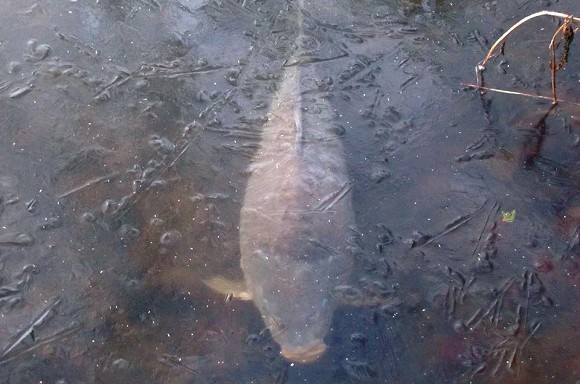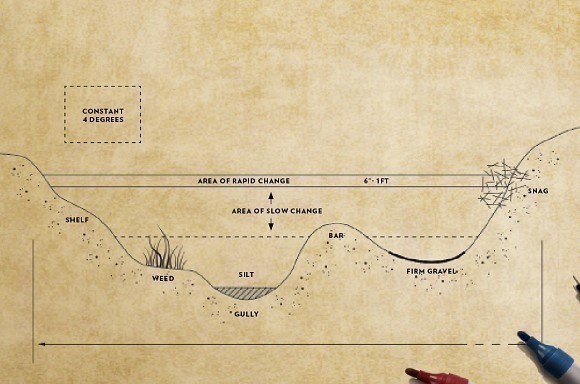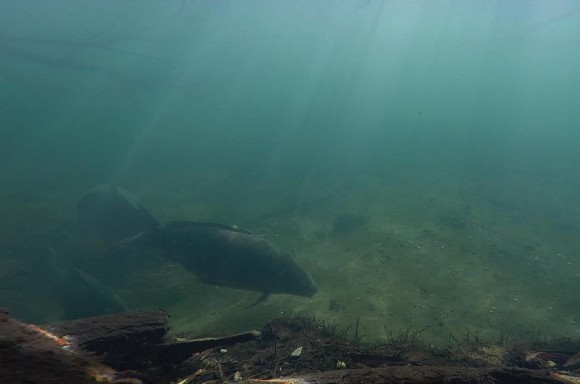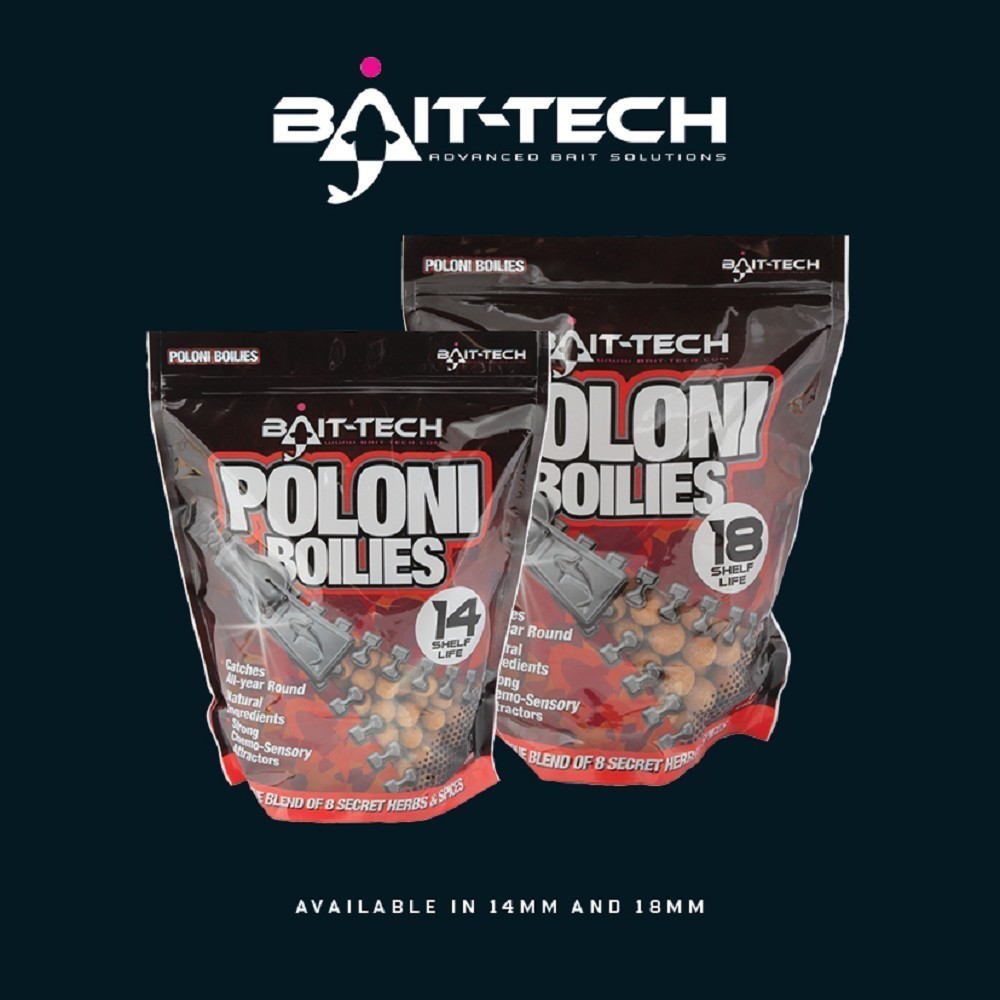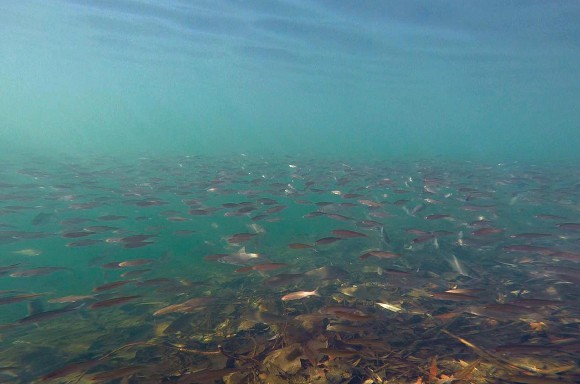
Understanding thermoclines
How important is water temperature? Is there such thing as a thermocline? Where do carp find it most comfortable to sit?
Hi guys,
I really would like to know how the thermocline evolves\moves during the course of the year. What happens with the thermocline over a whole year period? What influences this situation? Is it there all year round or when does it start and stop? Would you ever fish underneath that warm layer?
Peter de Buyser, Belgium
Now don’t worry, whilst these things may be the stuff of science books and complicated calculations, we’ve got our man-carp and backroom science buff, Rob Hughes, to put it all into plain English and send us off in the right direction. He knows about these things you know!
Over to Hughesy...
Seasonal changes in water temperature and conditions have a massive effect on how we fish and how the carp feed and live and it’s no mistake that when I have been diving there are certain areas that hold loads of fish and others that seem devoid. Before we look at venue specifics, the first thing we need to do is to take a little look at water and apply a bit of science to it.
Scientific bit!
Water is a basic element and can either be a liquid, solid or a gas. We know that at sea level it boils and turns to steam at 100-degrees celcius (lower the higher up a mountain you go) and also that it turns into a solid i.e. ice at 0-degrees. In between it is liquid and it contains oxygen and hydrogen.The colder it gets the more oxygen it can hold, the warmer the less it holds, and this can affect the carp in summer so bear it in mind later in the year. When the water is really hot, especially overseas, the fish will often head to somewhere cooler for a bit of a break.
The important thing from our point of view though is its density. In layman’s terms, density has a similar effect to weight, and the colder the water is, the denser it becomes so it weighs more and sinks. Until it reaches 4-degrees that is, then for some incredible reason known only to nature and some clever scientists whose names sound very foreign, it rises back up to the surface again. This has the incredible effect of stopping lakes freezing completely and allowing life to continue below the ice.
Before we head into any practical theoretical or applied science, let’s now strip back to the very basics of survival for what is a pretty simple creature.
Any fish, be they a carp or a gudgeon, wants food and security, overridden at certain times of year with the need to spawn. There’s a bit of a social element too, and of course the food requirement always exists, but the colder water means that their food requirements are significantly less than in warmer water. Put simply, they don’t need to eat as much and they often balance the effort that it takes to move around and get food with the value of actually finding it. After all, in a natural world, without angler’s baits going in the water, there isn’t a lot of grub around, and historically the text books told us that carp hibernated, or at least went dormant when the water was below 6-degrees. Because the need to feed isn’t as important, they tend to find the area of water that is most comfortable to them and stay in that area, eating as and when they really need to, but not actively going out to hunt. I suppose it’s a bit like us not wanting to go out when the main shop is closed and we don’t know where the nearest garage is so we don’t want to make the effort.
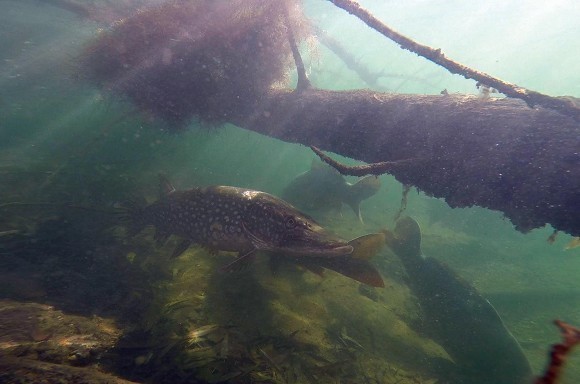 All feuds are put to one side when warmth is concerned. Even the prey fish risk the pike when it’s a case of keeping warm
All feuds are put to one side when warmth is concerned. Even the prey fish risk the pike when it’s a case of keeping warmWe now know that carp do feed in the colder months. I suspect that one of the reasons for the myth being created was that the old boys tended to fish for carp on the bottom. Indeed, 18 odd years ago I was fishing a place called Birch Grove and we had an idea that the fish were up in the water and wanted them on the deck to catch them. My idea back then was a feeder filled with warm flavoured water and the idea was that the warm water would rise from the feeder up through the water column taking a smell with it, and when it cooled it would sink back down bringing the fish. Did it work? Well, I caught a few using that method but I caught a few using other methods too so we don’t really know. What I am convinced of though, is that the fish were up in the water because they were more comfortable there as it was more stable. If we had known about Zigs back then I’m sure we would have caught more.
The reason that they are there, especially in the winter months, is that the areas in the mid-water of the lake, known as the metalimnion is the most constant area of water temperature. The surface 25cm is susceptible to rapid change as it is warmed by the sun and cooled by the air on a daily basis so it is up and down like the proverbial drawers. In winter this doesn’t affect the water below it as the warmer water stays at the top, as does the ice, so it’s only the very surface layers that get affected. The bottom is a static 4-degrees and will not warm up at all until spring time.
In the summer, however, that wind on the surface can have a warming or a cooling effect depending on the temperature difference between the water and the air. The carp will find an area they can class as their living room which is the most constant as they don’t like change and for me that tends to be in the middle third.
Thermocline
A thermocline is described as an area of rapid change in temperature. Now in the majority of lakes in the UK these don’t exist as the lake is usually too shallow and the water is heated or mixes easily. Water stratifies in the way that we have spoken about above, but large thermoclines are unusual. In deep lakes over, say 25-30ft, they are more common. The wind has a big effect on thermoclines as the warm and the cold water really are a big barrier to each other. Wave action and wind action, especially at the windward end of the lake cause the surface water to be pushed down and under the water above, thus pushing the colder water to the surface and warming it up. Underwater this causes a tow as the surface water is pushed along underneath the surface in the opposite direction. Sometimes you will see a scum line or a line of froth just off the windward bank. This is called a ‘thermal bar’ and is caused when the warm and the cold water meet underwater. A bait either side of it by a metre or so will tell you which temperature the fish prefer to be in and can be very productive.
How the heat works underwater
Heat travels from one thing to another in three different ways: conduction, convection and radiation. Conduction is the transfer of heat from one body to another, so the gas warms the pan and the pan warms the water. This is how fish get their warmth from water as the water around them dictates their temperature.
Convection is where there is a current of heat, for example by the side of a hill where warm air is pushed upwards and used by birds and gliders to soar, or in the water, where a stream or spring enters a lake. The third one, radiation, has baffled me, but I’ve had a bit of a eureka moment whilst researching this feature as I couldn’t get my head around fish being warm in cold water. It’s down to radiation. Radiation emits from everything, the biggest cause being the sun. Now ice and cold water can insulate the transfer of heat by conduction (it takes ages for heat to warm it up) but it can’t stop radiation. Lets have a look at our world. The sun warms the air and it’s a nice day. Lovely. It’s now a cold day but the sun’s rays warms anything that it touches as heat is absorbed from the infra red and UV rays given off. This only works when there is something to absorb the heat as it will be weakened as it travels through the water and blocked out totally if the water is coloured. That thing is the carp’s back, so even though the water is cold, the fish can warm up through radiation. If it’s a flat calm day they will be inches under the surface. If it’s slightly breezy they will be just under the area of epilimnion like the roach are in the main intro picture, and if it’s proper choppy, the sun’s probably not out so they won’t be up there at all.
The final thing I would add is that there tends to be warm and cold patches underwater caused by localised issues such as weed which traps heat and prevents water movement, and also gravel which reflects light back up again. Silt tends to hold heat more than gravel hence why they quite like it as the winter progresses.
The seasons at a glance
Winter
Colder water sits at the surface chilled by the air above it which is usually cooler. The warmer water sits just below the surface layers for 25cm approximately (unless it is very windy) and the windward end of the lake will be susceptible to a much wider variation of temperature change than the water below.
Top tip: In the bleak mid-winter, when it’s really cold and settled, go for the bottom half of the middle third, occasionally rising up in the water if the day is bright.
Spring
The lake warms up from the surface downwards, slowly heating all the way through the water column. Eventually the water at the bottom of the lake is warmed up and the gases in the silt at the bottom of the lake heat up and expand before releasing to the surface and “turning over” the bottom of the lake. When this happens the bottom is a bit of a no-go area for a few days due to methane and scum.
Top tip: Stay in the shallows or the upper layers of open water. On flat days go right up just below the surface.
Summer
The more constant water once again is in the middle layers and the slightly cooler water at the bottom. The biggest fluctuations are in the surface layers where the water comes into contact with the air and it warms and cools accordingly but it also oxygenates. If it rains the water sinks through the layers warming as it goes as the water below it is often warmer especially after a hot day/cool night.
Top tip: Stay off the deck after heavy rain. Go for the windy end after prolonged periods of warm weather and a new wind appears.
Autumn
The water will be cooling from the surface so the fish are more likely to be down towards the bottom in the more comfortable areas but it is not too cold anywhere yet so they could, in reality, be at all levels. Oxygen levels are high all over so there is no preference other than where they can get the most food.
Top tip: Put loads of food in, encourage them to feed on the deck, and make hay. It’s autumn after all.
Temperature inversion: The seasonal change
A temperature inversion occurs where the warm and cold-water swap places from top to bottom of the water column. Because of the way that water works, spring sees the biggest temperature inversion effect, especially on deeper lakes. As the temperature picks up out of the severe cold, as it is now, remains steady at about 4-degrees and the frosts and ice risk has gone, the water starts to warm up. It does this from the surface downwards by taking heat from the air. The surface layer has to heat up and push the warm water downwards and this can take some time as water warms and cools faster than air. As a result, the surface layers are significantly warmer than the deeper water.
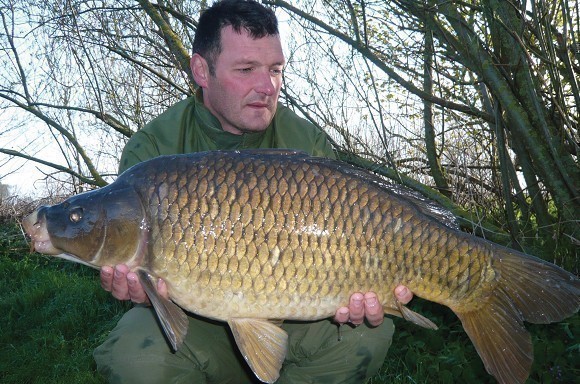 A mid-twenty from my own pool, Birchwood in Shropshire. At 1-1.5m deep the lake is so shallow that thermoclines don’t happen and that makes it a brilliant winter water
A mid-twenty from my own pool, Birchwood in Shropshire. At 1-1.5m deep the lake is so shallow that thermoclines don’t happen and that makes it a brilliant winter waterA practical example was in Bundy’s when we tried to dive down to 35ft only to find that after 18ft it started to get very, very cold. I recall seeing a line of maize starting at 18ft and trailing down into the depths. Above it there was none at all but it had been thrown in so as to cover all depths. The fish had woken up, sensed the sun and headed up in the water column to warm up and feed. They did in the shallower water leaving anything below 12ft completely fish-free.
Eventually the heat will make its way to the bottom and the bottom of the lake will warm up and break-up as the methane and carbon dioxide trapped in the silt start to expand. This is called ‘the turnover’ and it refreshes the bottom of the pond, taking away a lot of the dead and dying detritus.
Environmental factors to think about
Radiation
The sun’s rays will give heat as they hit the fish even if the water is cooler around them. That’s why carp like to go up into the surface layers and sunbathe, even under ice, as proven by that picture to your bottom left.
Springs
Groundwater in the winter has a warming effect and a cooling one in the summer. If you know where the springs are you could be quids-in as they offer a nice variation from the water around them.
Thunder storms
Heavy rain in summer is cold and sinks straight to the bottom of the lake. The rest of the lake water will warm it up, but if there was a lot it can cool the rocks and silt, chilling the deck and putting the fish off from feeding hard on the bottom.
Wind
Has a significant effect on the surface, and an even bigger effect at the windward end of the lake. Rule of thumb applies if you are on the end of it: if it’s a cold wind, avoid, if it’s a warm wind, apply.



